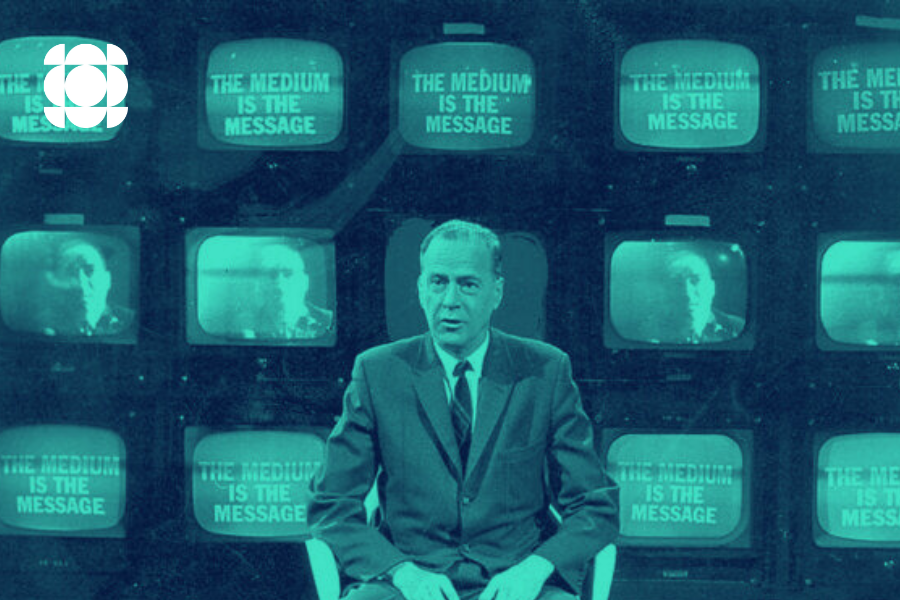Charlie Rapino on Creativity, Algorithms, and What Comes Next
Charlie Rapino is a seasoned music industry professional with a rich history of past endeavours. He currently serves as the Vice President of A&R and Communications at Artist First, Italy’s largest independent music company offering comprehensive services across the industry. Additionally, Charlie holds the position of Vice President of Relations at the Web3 Music Association. With extensive experience, he also serves as a Non-Executive Board Advisor to the WRM Fund and a music industry consultant to the Ridley Scott Creative Group. In this role, Charlie was the key player and deal-breaker for the Robbie Williams Netflix series, playing a crucial role in shaping the project’s success.
Renowned for his groundbreaking work as an A&R executive and independent record producer, Charlie and his business partner Marco Sabiu played a pivotal role in launching ‘Take That’ to stardom, contributing to numerous worldwide pop hits during the vibrant music scene of the 90s. Having held executive positions at major players such as Sony Music International and Decca Records, Charlie’s expertise extends across various facets of the industry. He has also provided advisory services to esteemed figures such as the legendary maestro Ennio Morricone.
In this conversation, Charlie Rapino discusses the evolution of the music industry, highlighting the shift from physical sales to streaming, and noting how music has transformed into a commodity. Charlie further emphasises the need for collaboration between the tech and music sectors to foster innovation and creativity. He underscores the importance of curiosity and adaptability for the music industry to keep pace with technological advancements. Charlie warns that failing to innovate could lead to losing relevance to other entertainment forms. Finally, he advises both the industry and emerging artists to stay adaptable, continuously learn, and embrace new technologies and methodologies to thrive in the music business.
What’s Changed in the Music Industry?
From Physical to Digital: A Fundamental Transformation
Charlie, your journey through music production, including collaborations with renowned artists like Take That and Kylie Minogue, has given you a firsthand view of the music industry's evolution. What significant shifts have you witnessed over the years?
Charlie: It's no longer the same old music industry; it's transformed into a streaming business. The focus has shifted from music as an art form to music as a commodity. When I started in the early 1980s, the industry was dominated by physical sales—vinyl records, cassettes and later, CDs. Each release was more of an event, and the relationship between artists and fans was primarily mediated through record stores and radio play.
When streaming platforms came onto the scene, the landscape drastically changed. Music is now consumed in a more fragmented and instantaneous way. The digitalisation of music has given way to playlists, which only emphasise individual tracks. This shift has affected how music is produced and released and how it is marketed and monetised.
How has this digitalisation affected artists and labels?
Charlie: Digitalisation opened up new avenues for artists to create, distribute, and promote their music, allowing them to reach a global audience and engage directly with fans. However, artists build their work around what will perform well rather than what truly represents their vision. They are increasingly conforming to algorithms. This stifles originality, as they follow consensus rather than define it.
The shift from album sales to streaming revenue has changed labels' business models. With shorter and more frequent releases, the financial dynamics have shifted, too.
Does Streaming Limit Creativity?
Technology Should Support, Not Restrict, Artistry
Do you think streaming and digitalisation limit artists' creativity? What can the music industry do to embrace new technology?
Charlie: The music industry must adopt new platforms and technologies to cultivate better art and originality rather than focusing on trends and data. This means encouraging artists to experiment and take risks and providing them with the resources to explore new creative territories. By supporting artists in this way, the industry can ensure that technology enhances, rather than limits, artistic expression.
With this in mind, do you think the music industry is open to new technology?
Charlie: I think the music industry is becoming increasingly open to new technology — it just needs the right conditions. Historically, there’s been hesitation, mostly because change often arrives without collaboration. But I believe we’re entering a new chapter where the industry recognizes that innovation isn’t a threat — it’s a tool.
The opportunity now lies in building bridges between tech and music. If both sides work together — sharing knowledge, aligning incentives, and experimenting — the results could be extraordinary. We need a collaborative environment where artists, rights holders, and technologists test ideas, fail fast, and find what works. There’s a growing willingness to do just that, especially among the next generation of artists and executives who see tech not as disruption, but as evolution.
The appetite for innovation is there. We just need to keep feeding it with curiosity and openness.
Fan Relationships in the Digital Age
The Essence of Fandom Remains Unchanged
With new technology comes new ways of building fandoms; how has building a loyal fan base changed?
Charlie: The core dynamics remain the same. Fans form deep connections with artists just as they did in previous eras. Think about Frank Sinatra in the 50s, Mick Jagger in the 60s, Robert Plant in the 70s, Robbie Williams in the 90s, and Harry Styles now. The relationship is precisely the same, but the medium through which it happens is different. Technology has undoubtedly changed how these connections are made and maintained, offering more direct and immediate access, but the essence of fandom—an emotional connection with the artist—remains unchanged.
In fact, social media has amplified artists' ability to connect with their audience on a more personal level. Artists can now share their day-to-day lives, creative process, and thoughts in real-time, fostering a sense of intimacy and immediacy that was previously unattainable.
The real magic happens when an artist reaches out to the technology and uses it as a tool to bring their vision to the people.
Staying Relevant in a Rapidly Changing World
Curiosity as a Strategic Imperative
What's needed for the music industry to keep pace with technological advancements?
Charlie: Curiosity. We must be open to exploring new technologies and methodologies to stay relevant in a rapidly changing landscape.
Could the industry's reluctance to innovate jeopardise its future?
Charlie: Firstly, content owners control the markets like never before, look at what happened with Lucian Grainge, Universal Music and TikTok. So as technology evolves, so do consumer preferences. If the industry fails to adapt, it risks losing relevance to other forms of entertainment, like gaming. We're in an age where technology shapes how music is made and consumed and how it's experienced.
There's also a bright side - technology has democratised music production, allowing anyone with a laptop and a creative spark to produce and share music. This has led to new talent and diversity in the music scene that we’ve never seen before. Artists are no longer at the mercy of major labels to get their music heard; they can build their audiences through social media and streaming platforms.
Does Streaming Limit Creativity?
Technology Should Support, Not Restrict, Artistry
What advice would you offer to the music industry and emerging artists navigating this era of limitless technological possibilities?
Charlie: I recommend reading Marshall McLuhan's "The Medium is the Message." It offers profound insights into how technology shapes our perception and expression. This is especially relevant today, as technology continuously redefines the boundaries of music creation, distribution, and consumption.
It's also essential for both the industry and artists to remain adaptable and open-minded. The landscape is changing rapidly, and what works today might not work tomorrow. Continuous learning and agility will be key to thriving in this dynamic environment. Networking with tech innovators and staying updated on the latest trends can provide a competitive edge.
Learn more at record.nexus
Follow @recordnexus on Twitter

